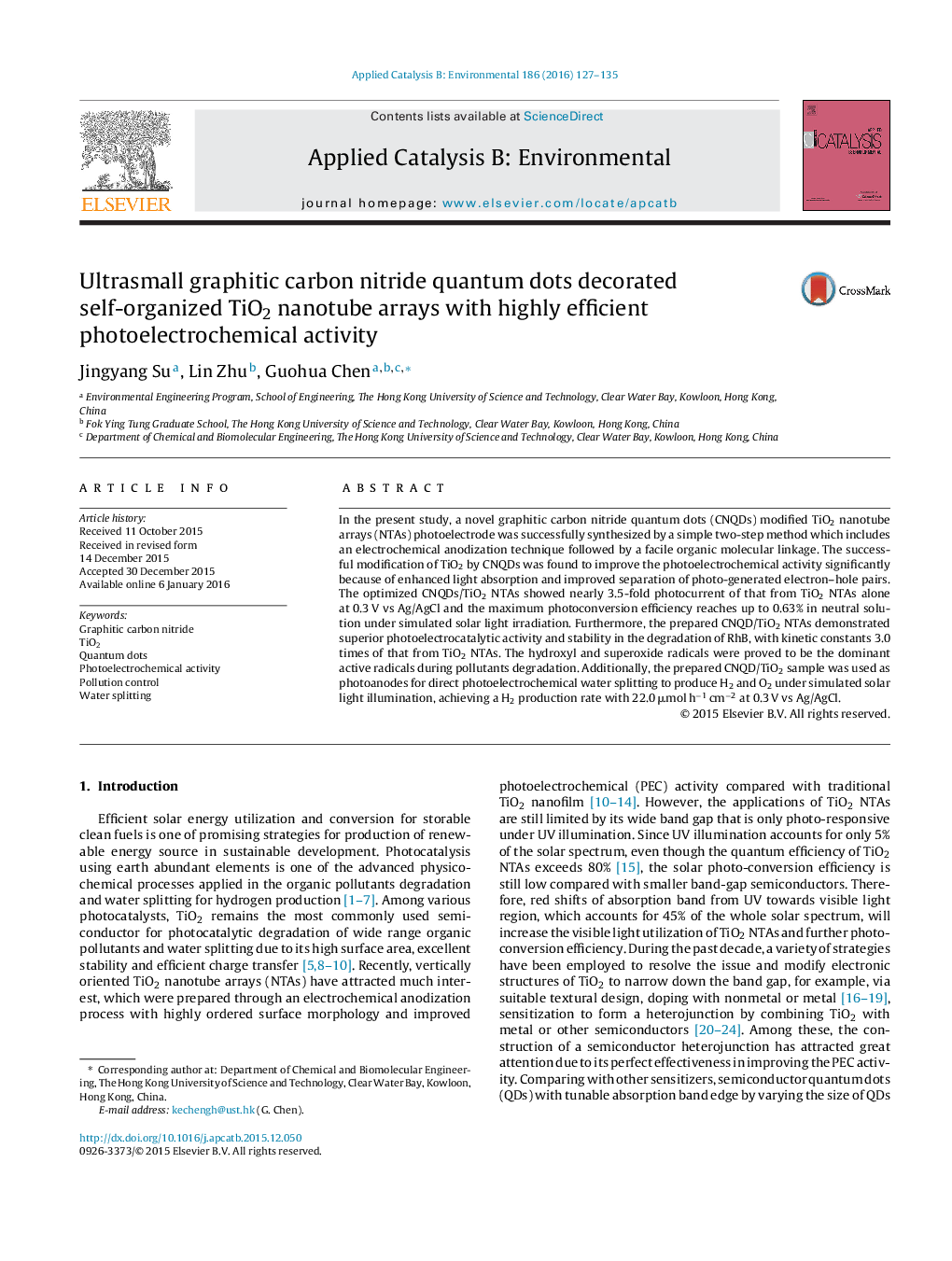| Article ID | Journal | Published Year | Pages | File Type |
|---|---|---|---|---|
| 44836 | Applied Catalysis B: Environmental | 2016 | 9 Pages |
•Graphitic carbon nitride quantum dots were successfully anchored on TiO2 nanotube arrays by bifunctional organic linker.•The modified sample displays significantly improved photoresponse.•Direct photoelectrochemical water splitting to produce hydrogen was achieved.
In the present study, a novel graphitic carbon nitride quantum dots (CNQDs) modified TiO2 nanotube arrays (NTAs) photoelectrode was successfully synthesized by a simple two-step method which includes an electrochemical anodization technique followed by a facile organic molecular linkage. The successful modification of TiO2 by CNQDs was found to improve the photoelectrochemical activity significantly because of enhanced light absorption and improved separation of photo-generated electron–hole pairs. The optimized CNQDs/TiO2 NTAs showed nearly 3.5-fold photocurrent of that from TiO2 NTAs alone at 0.3 V vs Ag/AgCl and the maximum photoconversion efficiency reaches up to 0.63% in neutral solution under simulated solar light irradiation. Furthermore, the prepared CNQD/TiO2 NTAs demonstrated superior photoelectrocatalytic activity and stability in the degradation of RhB, with kinetic constants 3.0 times of that from TiO2 NTAs. The hydroxyl and superoxide radicals were proved to be the dominant active radicals during pollutants degradation. Additionally, the prepared CNQD/TiO2 sample was used as photoanodes for direct photoelectrochemical water splitting to produce H2 and O2 under simulated solar light illumination, achieving a H2 production rate with 22.0 μmol h−1 cm−2 at 0.3 V vs Ag/AgCl.
Graphical abstractFigure optionsDownload full-size imageDownload as PowerPoint slide
